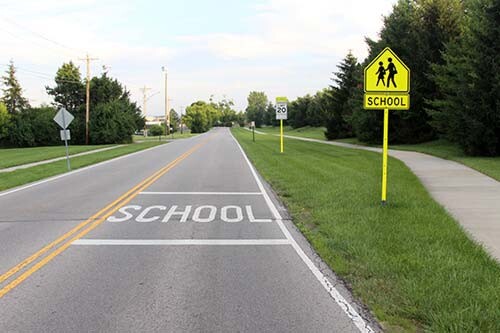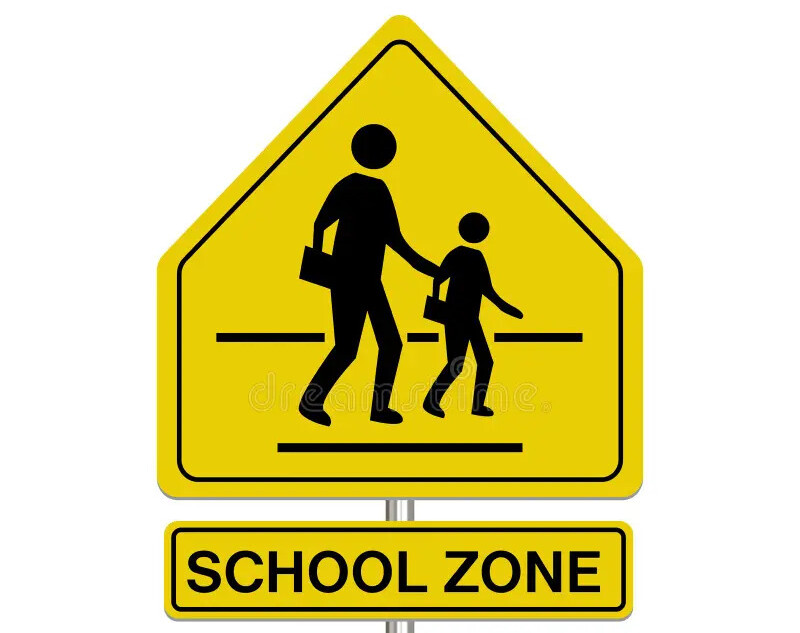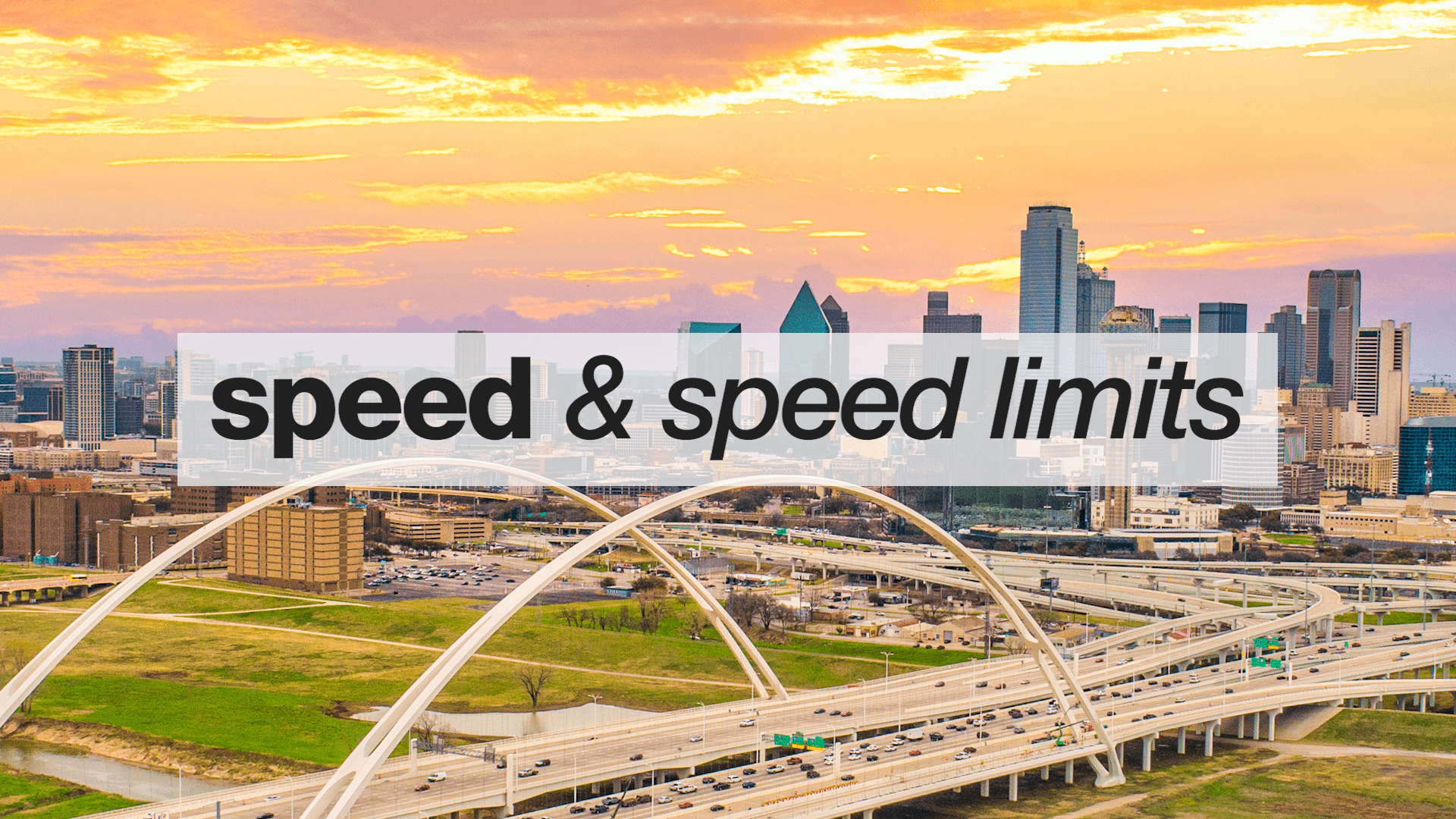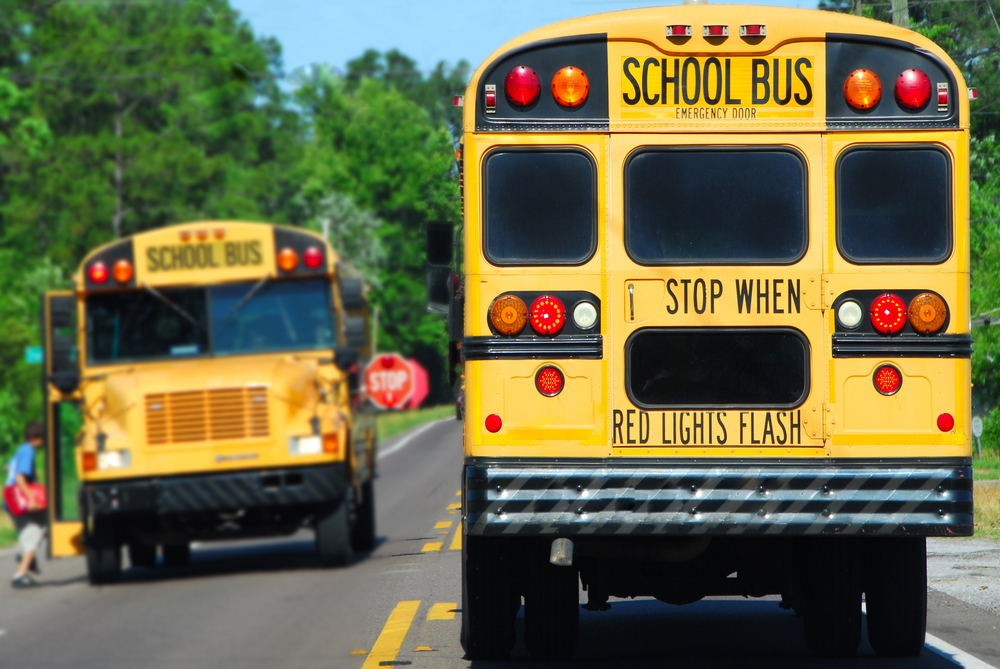
Driving through Texas school zones requires special attention to reduced speed limits that protect children’s safety. Understanding when these limits apply, what penalties await violators, and how to drive safely in school zones not only helps you avoid costly tickets but also empowers you to contribute to keeping communities safe.
Texas school zone laws are not just about avoiding fines; they are about preventing tragedies. Designed to protect vulnerable pedestrians during the most hazardous times of day when children are arriving at or leaving school, these laws serve as a reminder of our responsibility as drivers to be cautious and alert.
As a TDLR-approved driver education provider since 2004, Virtual Drive of Texas has taught thousands of students about Texas traffic laws, including critical school zone regulations. In this guide, we’ve compiled everything you need to know about school zone speed limits, enforcement times, penalties, and safe driving practices, drawing from our extensive experience and expertise.
By reading this article, you’ll understand exactly when school zone speed limits apply, how much violations cost, and proven strategies for driving safely around schools and protecting children.
So what exactly is the School Zone Speed Limit in Texas?
Texas school zone speed limits are typically 20 mph during active school hours, though the exact limit varies by jurisdiction and posted signage. Some Texas school zones may have speed limits as low as 15 mph in areas with high pedestrian traffic or complex traffic patterns.
The specific speed limit in each school zone is clearly posted on regulatory signs that display both the reduced speed limit and the times when it is in effect. Unlike regular speed limits that remain constant, school zone speed limits are only enforced during designated hours when children are most likely to be present.
When School Zone Speed Limits Apply: School zone speed limits are enforced during posted hours, typically covering morning arrival (7:00-8:30 AM) and afternoon dismissal (2:30-4:00 PM) periods. Many school zones use flashing beacon signals that activate automatically during enforcement hours, providing a clear visual indication when reduced speeds are required.
Some school zones remain active during lunch periods or special events, and enforcement may extend to include extracurricular activities or evening events. The key is watching for posted signs and activated flashing lights that indicate when the reduced speed limit is in effect.
Exceptions and Special Circumstances: School zone speed limits typically don’t apply when school is not in session, such as during summer breaks, holidays, or weekends, unless specifically posted otherwise. However, some jurisdictions maintain school zone limits during summer programs or community events held at schools.
The presence of flashing beacons or posted time restrictions determines enforcement rather than whether children are visibly present. Drivers cannot assume school zones are inactive based on apparent activity levels.

Why Are Speed Limits Lower in School Zones?
Child Pedestrian Safety Concerns: Children behave unpredictably around vehicles, often running into streets without warning or failing to look both ways before crossing. Their more diminutive stature makes them less visible to drivers, particularly around parked school buses or other large vehicles standard in school zones.
Children lack the developed judgment to accurately assess vehicle speeds and distances, leading to poor timing when crossing streets. They’re also easily distracted and may ignore traffic while walking, playing, or talking with friends.
Accident Prevention and Injury Reduction: Lower speeds significantly reduce both the likelihood of accidents and the severity of injuries in the event of collisions. A pedestrian struck at 20 mph has a 95% survival rate, while the same pedestrian struck at 30 mph has only a 55% survival rate.
Reduced speeds give drivers more time to react to unexpected situations, such as children running into the street or crossing guards stopping traffic. The additional reaction time provided by lower speeds often means the difference between a close call and a tragedy.
Traffic Pattern Complexity: School zones experience unique traffic challenges, including double-parked vehicles, frequent stopping for passenger loading, crossing guards directing traffic, and school buses with flashing lights. These conditions require slower speeds to navigate safely.
The combination of increased pedestrian activity, complex traffic patterns, and frequent stops creates situations where higher speeds become extremely dangerous for all road users.
What Are the Penalties for Speeding in a Texas School Zone?
Financial Penalties: Texas imposes enhanced penalties for school zone speeding violations, with fines significantly higher than regular speeding tickets. Most Texas jurisdictions add a minimum $25 in court costs specifically for school zone violations, which fund crossing guard programs and school safety initiatives.
Actual fines vary by municipality but typically start at $200-$300 for exceeding the school zone speed limit by just 1-5 mph. In major cities like Houston, Austin, and San Antonio, school zone speeding fines can exceed $500 for speeds more than 15 mph over the limit.
Additional Consequences: School zone violations may result in the addition of points to your driving record, potentially leading to license suspension if you accumulate too many violations. Insurance companies often increase rates significantly for school zone tickets due to their association with high-risk driving behavior.
Repeat school zone violations can result in enhanced penalties, including possible license suspension and mandatory driver education courses. Some jurisdictions utilize automated speed enforcement in school zones, resulting in additional citation procedures and potential vehicle impoundment for severe violations.
Long-Term Impact: School zone speeding violations remain on driving records for extended periods, which can affect insurance rates and employment opportunities for commercial drivers. The enhanced penalties reflect Texas’s commitment to protecting children and deterring dangerous driving in sensitive areas.

Safety Tips for Driving in School Zones
Defensive Driving Strategies: Reduce speed well before entering school zones rather than waiting until you see the sign. This approach gives you time to adjust to traffic conditions and ensures compliance with posted limits from the moment they take effect.
Eliminate distractions by putting away cell phones and focusing entirely on driving. Texas law prohibits the use of handheld devices in active school zones, with violations carrying the same penalties as speeding violations.
Awareness and Preparation: Watch for crossing guards and obey their directions immediately. Remember, crossing guards have legal authority to stop traffic, and their signals take precedence over traffic signs or signals in school zones. Respecting their authority is a sign of considerate driving.
Expect the unexpected from children, including sudden movements into the street, dropped items that children might chase, and groups of students who may not be watching traffic. Maintain constant vigilance and be prepared to stop quickly.
Practical Driving Tips: Leave extra travel time during school hours to avoid the temptation to speed through school zones. Rushing leads to poor decisions and increases the risk of accidents in areas designed for maximum safety and security.
Maintain greater following distances in school zones to account for frequent stops, school buses loading passengers, and crossing guard activities. The additional space provides crucial reaction time in high-activity areas.
Parent and Student Safety: Parents dropping off or picking up children should use designated areas and avoid double-parking or blocking traffic flow. These behaviors create dangerous conditions and may result in traffic citations.
Students should be taught to cross only at designated crosswalks, wait for crossing guard signals, and avoid distractions like phones or earbuds while walking near schools.
Why Do Accidents Happen in School Zones?
Driver-Related Factors: Distracted driving is the leading cause of school zone accidents, as drivers focus on their phones, navigation systems, or other activities instead of watching for pedestrians. The complexity of school zone traffic patterns requires full attention that distracted drivers cannot provide.
Speeding violations and aggressive driving behaviors increase accident severity and reduce the reaction time needed to avoid collisions with children or other vehicles. Many drivers fail to recognize when school zone limits are active, leading to inadvertent violations.
Environmental and Traffic Factors: Poor visibility during morning and evening hours coincides with peak school zone activity, creating dangerous conditions for both drivers and pedestrians. Sun glare, weather conditions, and inadequate lighting contribute to reduced visibility.
Congested traffic from parent drop-off and pickup activities creates stop-and-go conditions where children may unexpectedly emerge from between parked vehicles. School bus loading and unloading add additional complexity with frequent stops and activated warning lights.
Communication and Education Gaps: Many drivers lack understanding of specific school zone laws, including when limits apply and what behaviors are prohibited. This knowledge gap leads to unintentional violations that can have serious consequences.
Inadequate signage or unclear markings in some school zones may contribute to driver confusion about speed limits and enforcement times. However, drivers remain responsible for identifying and obeying posted limits, regardless of the quality of the signage.
When Do School Zone Speed Limits Apply?
Standard Enforcement Hours: Most Texas school zones enforce reduced speed limits during morning arrival periods (typically 7:00-8:30 AM) and afternoon dismissal times (usually 2:30-4:00 PM). These hours align with peak pedestrian activity when children are walking to and from school.
Some school zones also maintain reduced limits during lunch periods when students may leave campus or when outdoor activities increase pedestrian traffic around school buildings.
Flashing Beacon Systems: Many Texas school zones utilize automated flashing beacon systems that activate during enforcement periods, providing a clear visual indication when reduced speed limits are in effect. These systems typically flash yellow lights above speed limit signs during active hours.
When flashing beacons are present, drivers must obey the reduced speed limit regardless of whether children are visibly present. The automated systems account for varying school schedules and special events.
Special Events and Extended Hours: School zone limits may apply during evening events, such as sports games, concerts, or parent-teacher meetings, when pedestrian activity increases around school grounds. Posted signs typically indicate when extended hours are in effect due to exceptional circumstances.
Summer programs, weekend activities, or community events held at schools may trigger school zone enforcement outside regular academic hours. Drivers should watch for posted notices about extended enforcement periods.
Jurisdictional Variations: Individual cities and counties may establish specific school zone hours that differ from standard times based on local school schedules and traffic patterns. Some urban areas maintain school zone limits for extended periods due to high pedestrian traffic.
Rural school zones may have different enforcement patterns reflecting bus transportation schedules and reduced pedestrian activity. Always check posted signage for jurisdiction-specific requirements.
How to Prepare for School Zone Questions on the Texas Driving Test
Common Test Topics: The Texas DPS written test frequently includes questions about school zone speed limits, enforcement hours, and required driver behaviors. Test questions may ask about specific speed limits, when they are in effect, and proper procedures for interacting with crossing guards.
Typical test scenarios include identifying correct speeds in different zone types, understanding penalty enhancements, and recognizing situations where special caution is required.
Study Strategies: Review the official Texas Driver Handbook sections covering school zones, pedestrian safety, and special speed limit areas. Pay particular attention to specific speed limits, enforcement times, and driver responsibilities in school areas.
Practice with Virtual Drive of Texas’s free DPS practice tests that include school zone scenarios based on actual test questions. Our practice tests help identify knowledge gaps and reinforce correct responses to everyday test situations.
Real-World Application: Understanding school zone laws for testing purposes also prepares you for safe, legal driving in actual school zones. The knowledge gained for test success directly translates to protecting children and avoiding violations in daily driving situations.
Virtual Drive of Texas courses provide comprehensive coverage of school zone laws within the broader context of Texas traffic regulations, ensuring students understand both the legal requirements and the safety principles behind them.

Conclusion
Texas school zone speed limits exist to protect children during the most dangerous times of day when they’re traveling to and from school. Understanding these laws—including when they apply, what penalties await violators, and how to drive safely in school zones—helps you avoid costly tickets while contributing to community safety.
The key points to remember are that school zones typically enforce 20 mph speed limits during posted hours, violations carry enhanced penalties, including fines starting at $200, and safe driving requires constant attention and the use of defensive strategies.
Preparation for these responsibilities begins with comprehensive driver education that covers all Texas traffic laws.
Enroll with Virtual Drive of Texas today!
Master Texas Traffic Laws and Drive Safely
Understanding school zone laws is just one part of becoming a safe, knowledgeable Texas driver. Get comprehensive training that covers all Texas traffic regulations and prepares you for both testing and real-world driving situations.
- For Teens: Master all Texas driving laws with our Texas Parent-Taught Driver’s Ed course that includes comprehensive coverage of school zones and pedestrian safety.
- For Adults: Complete your required Adult Driver Education course with detailed instruction on school zones and all Texas traffic laws.
- Test Your Knowledge: Try our free DPS practice tests to see how well you understand school zone laws and other Texas driving requirements.
Have Questions? Visit our comprehensive driver’s license guide or learn more about why Virtual Drive is Texas’s trusted choice for driver education.
Ready to become a safer, more knowledgeable Texas driver? Contact our friendly team at (833) 3-VDRIVE for personalized guidance on Texas driver education and traffic laws.


